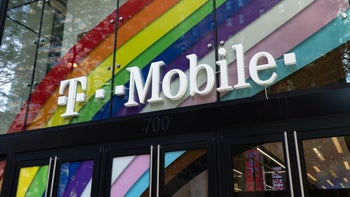T-Mobile to improve its 5G coverage after winning more 2.5GHz spectrum in FCC Auction 108

At the start of this month, T-Mobile won some additional mid-band 2.5GHz spectrum in the FCC's Auction 108. Unlike the more than $26 billion it spent to buy Sprint and capture the prize it longed for (Sprint's holdings of more than 100MHz of 2.5GHz mid-band spectrum), T-Mobile spent over $304 million to pick up 7,156 licenses in 2,724 counties helping it to plug some holes in its mid-band 5G coverage.
T-Mobile explains how it will use the 7,156 2.5GHz licenses it picked up in FCC Auction 108
T-Mobile announced today that the licenses it picked up in the auction cover 81 million people, mostly rural Americans. The nation's second-largest carrier says that it will be able to immediately deploy the new licenses once it is legally cleared to do so. As a result, T-Mobile will expand its Ultra Capacity 5G coverage to new communities and in areas already served by Ultra Capacity 5G, the wireless provider will be able to significantly increase bandwidth.

T-Mobile CEO Mike Sievert
T-Mobile CEO Mike Sievert, who has done a brilliant job filling the rather large shoes left by John Legere, said, "We’ve been clear in our mission for years. We've supercharged the Un-carrier by building the leading wireless network in America – with leading breadth and depth – and paired it with the best value, backed by the best customer experience from the best team. This additional spectrum only accelerates that mission."
The executive added that "Our competitors have been distracted, whether they were trying to become media conglomerates or were betting on the wrong 5G strategy, and their customers are paying the price. Meanwhile, we have been laser focused on being the best in wireless, and we’re seeing the results of that focus play out now."
We've said this before and we will say it again. T-Mobile got the jump on Verizon and AT&T when it came to building out their 5G coverage by thinking outside the box. While certainly proved to be a bad choice, Verizon and AT&T went for speed first and focused on their blazing fast mmWave signals. As fast as these signals are, they travel very short distances and are easily blocked by trees, buildings, and other structures that might be in the way.
As a result, very few Verizon or AT&T customers got to experience mmWave 5G (and that remains true to this day). T-Mobile, on the other hand, after applying the base of its triple-layer cake 5G network using its low-band 600MHz spectrum, used the attributes of low-band (including the ability to travel long distances and get past structures) to set up a nationwide 5G service. But the only issue with low-band 5G is that it doesn't deliver download data speeds much faster than 4G LTE.
T-Mobile expects to have 300 million people covered by its Ultra Capacity 5G signals by next year
But instead of pushing mmWave as Verizon and AT&T did, T-Mobile used the 2.5GHz mid-band spectrum purchased from Sprint to create a Goldilocks-type experience. Not as fast as the 1Gbps seen on mmWave 5G with its mid-band spectrum, T-Mobile could still provide download data speeds up to 10 times faster than 4G LTE. And since mid-band travels longer distances than mmWave and penetrates structures better than mmWave, many more T-Mobile customers could enjoy fast 5G connectivity than the competition.
This forced Verizon and AT&T to spend big bucks during the C-band auction last year so that they could pick up some mid-band spectrum of their own. Earlier this year, Verizon included 5G C-band service as part of its Ultra Wideband 5G, a designation that previously included mmWave only.
T-Mobile's Extended Range 5G (using the low-band 600MHz spectrum) now covers 320 million people, nearly everyone in this country. That is more 5G coverage than Verizon and AT&T combined! T-Mobile's "super-fast" Ultra Capacity 5G covers 235 million people nationwide and this should rise to 260 million by the end of this year and hit 300 million next year.
For those of you who thought that T-Mobile was blowing $26 billion on Sprint, the company is now arguably the 5G leader in the U.S. and it continues to spend what is necessary to improve its 5G coverage.













Things that are NOT allowed: